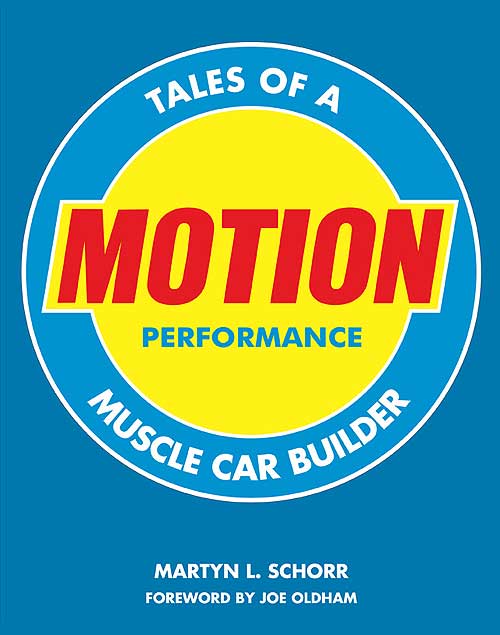 Book Review: Motion Performance – Tales Of A Muscle Car Builder by Martyn L. Schorr – Forward by Joe Oldham
Book Review: Motion Performance – Tales Of A Muscle Car Builder by Martyn L. Schorr – Forward by Joe Oldham
Hardcover – 176 pages, 10.9” x 9.4” x 0.7”, 262 photos (113 color, 149 B&W), $35.00, Published by Motorbooks – First published 2009, Copyright © 2009 by Martyn L. Schorr
Review by K. Scott Teeters
I’ll say this up front. I was NOT disappointed with this book. Actually, I had a tough time putting it down. Author, Martyn L. Schorr is THE man to tell this story because not only was he there as CARS Magazine editor, he helped plan, develop, promote, and market the entire enterprise. Plus, he got to drive most of the Baldwin-Motion Phase III Supercars!
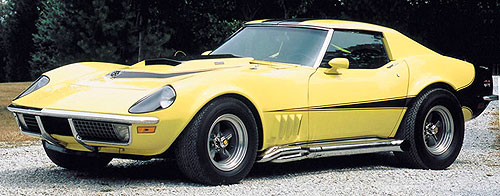
Stories abound in Schorr’s book. This is the fully restored “Squires Phase III GT #2.” Car #1 burned to the ground in a fire at the Baldwin Chevrolet parking lot. Eventually this car became a movie car with a crummy black paint job that was sprayed over the stripes!
Marty starts off the story by filling in the gap between the earliest days of the automobile to just before the official beginning of the muscle car era. Before Shelby and Motion Performance, there were dozens and dozens of specialty car makers. They weren’t called “tuner cars” back then, they were “coach builder cars.” Marty takes you all the way back to the 1910 Buick Bug with its massive 622-cubic-inch, 4-cylinder engine that was clocked at the Indy 500 at 106-mph! If you’re not familiar with the pre-muscle car coach builder / specialty cars, this is a cool trip down Memory Road. As long as people have had extra money to put into going fast, there have been people willing to build cars for them. Caption: Rosen often used Sunrise Highway as a test strip.
Though not at all “legal,” Joel’s cars weren’t out on the road for long. Note the sunlight under the front tires! While the Baldwin-Motion Supercar era could not have happened were it not for an amazing group effort, the enterprise really began with the extraordinary work of Joel Rosen. Schorr takes you on a trip through the ’50s when Rosen learned his mechanics craft in the Air force, working on radial piston-engine airplanes. A “car guy” from his earliest years, Rosen with his Neclan Service Station, started out as a very small repair shop owner in a not-so-good neighborhood in the Bedford-Stuyvesant section of Brooklyn, NY. It became Motion Performance.
He used his passion for racing and started tuning Fuelie Corvettes and was always willing to coax extra power from almost anything. On weekends and weeknights, Joel and his wife, Judith, drag raced and gymkhana raced their ’63 Corvette split-window Fuelie. Caption: Rosen’s Motion Performance shop was a magnet for local young car guys hoping to get a chance to see and hear one of Rosen’s big-block Chevys fire up! The shop was eventually moved to Baldwin, a Long Island, NY suburb. Sorry Chevy fans, but it was Rosen’s success turning a road racing Shelby Cobra into a national record holder drag racer that flipped the switch for Joel and set the stage for his entry into the world of supercar building.
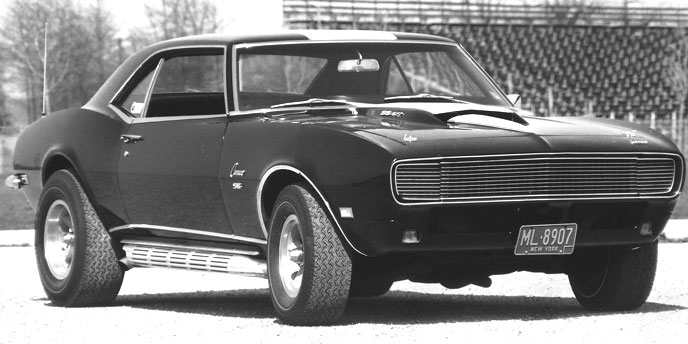
This was Rosen’s prototype Phase III 1968 Camaro, looking super sano wearing all black, the SS/RS Camaro option, mid-year Corvette side-pipes, and a Corvette stinger hood. SWEET!
When Rosen saw the introduction of the new Chevy Camaro and learned that a big-block 396 was an option, the light went on. Rosen grew up in the era of the “engine swap.” Since 427 Corvette engines could be purchased, swapping out the Camaro’s 396 with a 427 Corvette engine with a few “while we’re at it,” minor power enhancements was not rocket science!
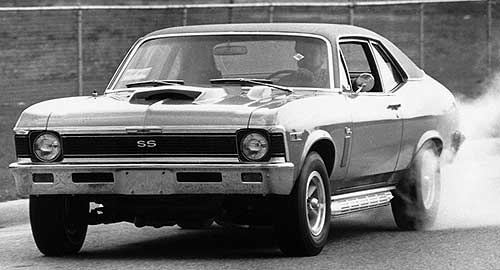
Even the Chevy Nova was part of the Baldwin-Motion “Fantastic Five” line up of supercars. The Corvette side-pipes looked boss on the shorter wheelbase Chevys.
Joel took the Shelby Mustang model to the next level. Why not let the customer buy a brand new Chevy with all of the Chevy options they want, then let Joel assemble a complete, turnkey supercar package that was tailor-made for the buyer? And here’s the kicker: the car would be guaranteed to run at least 11.50-seconds in the quarter-mile with either Joel or a Motion Performance qualified driver. You didn’t get that when you bought a Shelby Mustang! In ’67 a deal was struck with Baldwin Chevrolet, a local Chevy dealer, to produce “Baldwin-Motion Phase III Supercars.
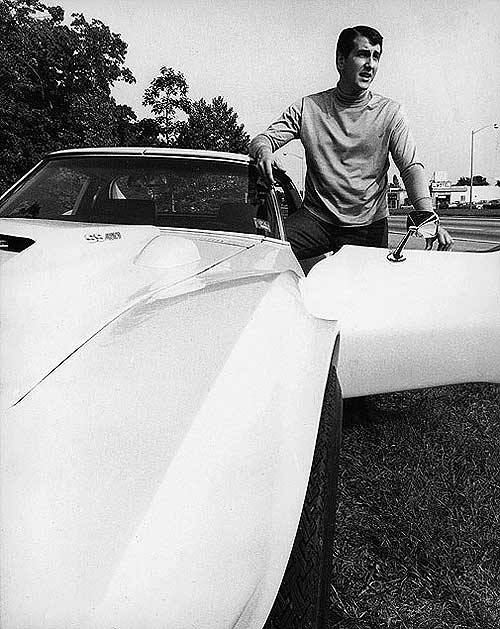
Here’s the good-looking, young, Rosen with his Phase III 1968 SS-427 Corvette prototype.
The enterprise was a group effort with Rosen and his crew doing the building, Schorr handling the advertising and marketing work, and John Mahler, the parts manager at Baldwin Chevrolet making sure that Rosen and customers had access to Chevrolet’s “heavy duty” parts. With a stream of road test and feature stories in enthusiast magazines, Schorr’s “in your face” advertising style, and Rosen’s building skills, as well as a successful A/Modified Production Camaro that battled with the likes of Grumpy Jenkins… the Baldwin-Motion Phase III Supercars were off to the races! Many were literally blowing away a lot of Fords and Mopars at the drag strip!
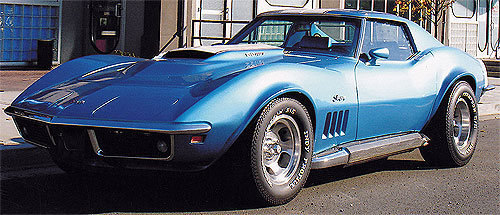
Every Baldwin-Motion was “built-to-order” meaning that they are all different.
The one important thing they all had in common was that they were all BLOODY FAST! After Schorr takes you through how Baldwin-Motion came together, he gives you a year-by-year tour of the cars as they developed and highlights of many of these truly unique machines. Unlike the Shelby Mustangs, every Baldwin-Motion car was different, yet each Phase III model had the same performance guarantee. Baldwin-Motion SS and Phase III conversions were available on five Chevy models; the Biscayne/Impala, Camaro, Chevelle, Nova, Corvette, and in ’73, the Vega was added to the lineup, packing either a 350 small-block, 427, or 454 big-block engine! The possibilities were endless.
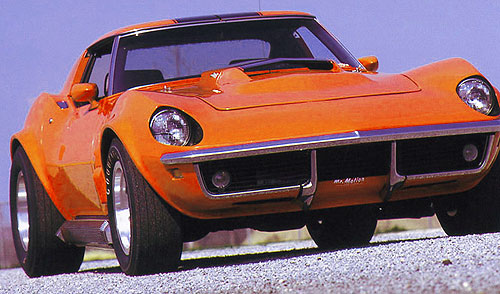
Here’s Rosen’s prototype Phase III GT Corvette. This car has been fully restored by Kevin Mackay of Corvette Repair and is frequently seen at Corvette shows.
Here’s where Schorr’s story telling really shines. Some of the stories of what happened to the cars and where they ended up are just jaw-dropping. Many have survived and have been auctioned off for hundreds of thousands of dollars. Some have been found in salvage yards, side yards, barns and even outside the U.S. in Germany, Canada, Mexico, Sweden, Iran. One Phase III GT Corvette burned to the ground at Baldwin Chevrolet before being delivered to the customer in California! Another was bought for just $1,200 because someone thought it was just a hot rodded old Chevelle.
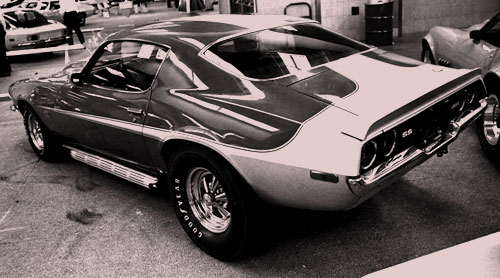
The slick new ‘70-1/2 Camaro made for one bad-ass-looking supercar. Love those side-pipes!
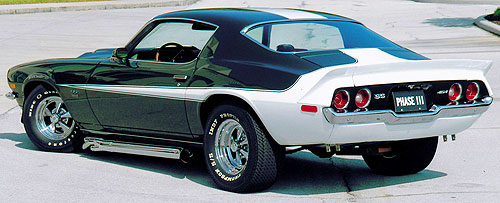
Here’s another example of a similar, but different Phase III ‘70-1/2 Camaro. Cragar mags, Hooker Header-Side-Pipes, and the classic Motion stripes pull it all together.
Baldwin-Motion supercars not only were guaranteed to run 11.5 et in the quarter-mile, but they “looked” the part as well. Then there’s the episode where the Feds came crashing down on Rosen with fierce fines of tens of thousands of dollars for every emissions device that had been removed or modified. Eventually a deal was made. Rosen paid a $500 fine and future sales had to have a disclaimer signed by Rosen and the customer that the vehicle does not comply with DOT and EPA regulations and is for EXPORT or OFF ROAD USE ONLY.
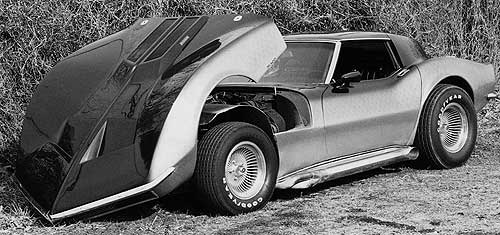
And if a Phase III 427 Corvette wasn’t in-your-face enough, Rosen offered the Maco Shark body kits that could be added to the Phase III Corvette package.
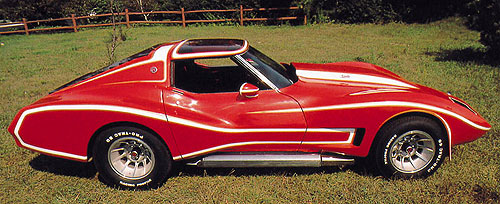
Arguably the wildest-looking Corvette Rosen ever built. The Can-Am Spyder used the IMSA wide-body front and rear fender pontoons, custom headlights, hood, lift-out roof panels, rear-window louvers, and factory ‘69 side-exhausts. What was under the hood was determined by the customer’s checkbook and nerve.
By 1987 Baldwin Chevrolet was long gone and it was time to close up shop and move on. But that’s not the end of the story. Rosen went on to create, “Motion Models” a successful, museum-quality military scale model business. In 2005, Joel Rosen reanimated his old Motion Performance effort with some new partners, Larry Jaworske, Joel Ehrenpreis and Marty Schorr at the helm, driving the the new “Motion, LLC” PR machine. When the first Baldwin-Motion Camaro in over 30 years hit the stage at the 2005 SEMA Show, it was WATCH OUT! The ’69 Baldwin-Motion 540 Camaro is a mid-front engine, two-seater Camaro coupe, packing a 700-plus horsepower, Bill Mitchell built Motion engine and the best of everything. The car received rave reviews at the ’05 SEMA Show and won the coveted GM Design Award. Then there’s the ’69 Camaro Super-speedster that debuted at the ’06 SEMA Show. OH WOW!
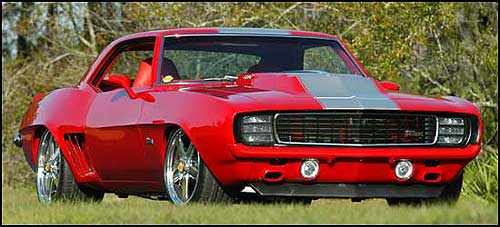
Baldwin-Motion Performance is back! Rosen & Company have a full-line of custom-built ‘69 and ‘10 Super Camaros. I do have one big question. Hey Mr. Motion! When are we going to see a Baldwin-Motion Phase III GT Corvette – modern-style? Like they say in North Jersey, “Dis Rosen guy, here. He don’t ever sleep! Ya know?”
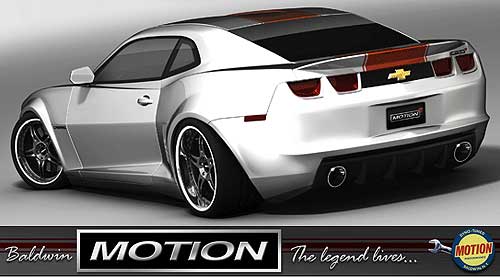
If the new retro-Camaro is more to your liking, and if you are a fan of Motion and Baldwin-Motion Phase III Supercars, like I am, you will totally love this book.
If you are a muscle car fan, this book will astonish you. You might even become a fan. From my perspective, how couldn’t you be? Just look at the Baldwin-Motion cars. How couldn’t you be taken? Of course, the only way this book could be better would be if you had a Baldwin-Motion Phase III Supercar for the day, with a full tank of gas. Nuff said.
Scott
PS – For more Baldwin-Motion posts, use the “Topics” dropdown on the far right sidebar.
For more information about the history of the Baldwin-Motion Phase III Supercar experience, visit their website at; http://www.officialbaldwinmotion.com
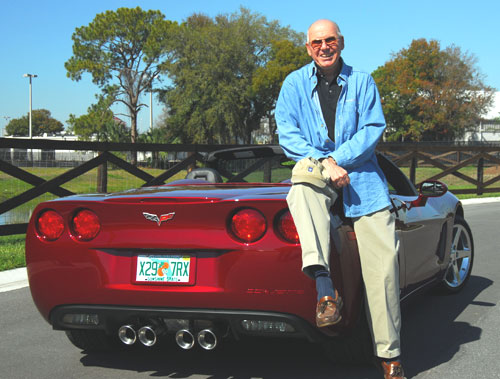
Marty Schorr currently resides in sunny central Florida and is still quite active in the automotive community. You can get his Motion Performance book below.
K. Scott Teeters interviewed Marty for the June 2009 issue of VETTE Magazine that you can read here… http://www.squidoo.com/Marty_Schorr_VETTE_Magazine_Interview
K. Scott Teeters is a columnist and artist for VETTE Magazine. His work can be seen at: http://www.IllustratedCorvetteSeries.com He can be contacted at lightoak@comcast.net. Check out his out his blog at http://www.corvettereport.com
____________________________________________________________________________
BUY THIS BOOK ON AMAZON.
See the Amazon ad on the Column to the right of this blog, www.corvettereport.com
Or Click on this Amazon Link, Motion Performance.

